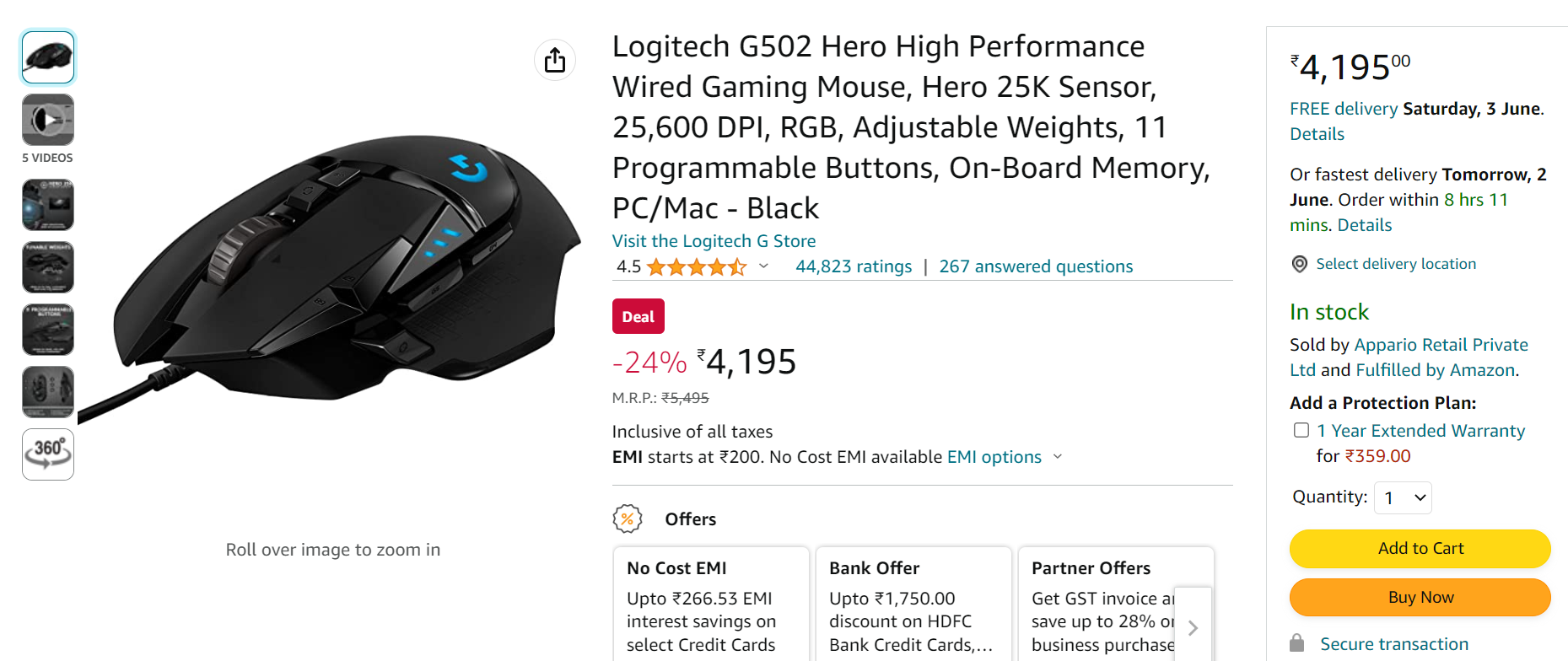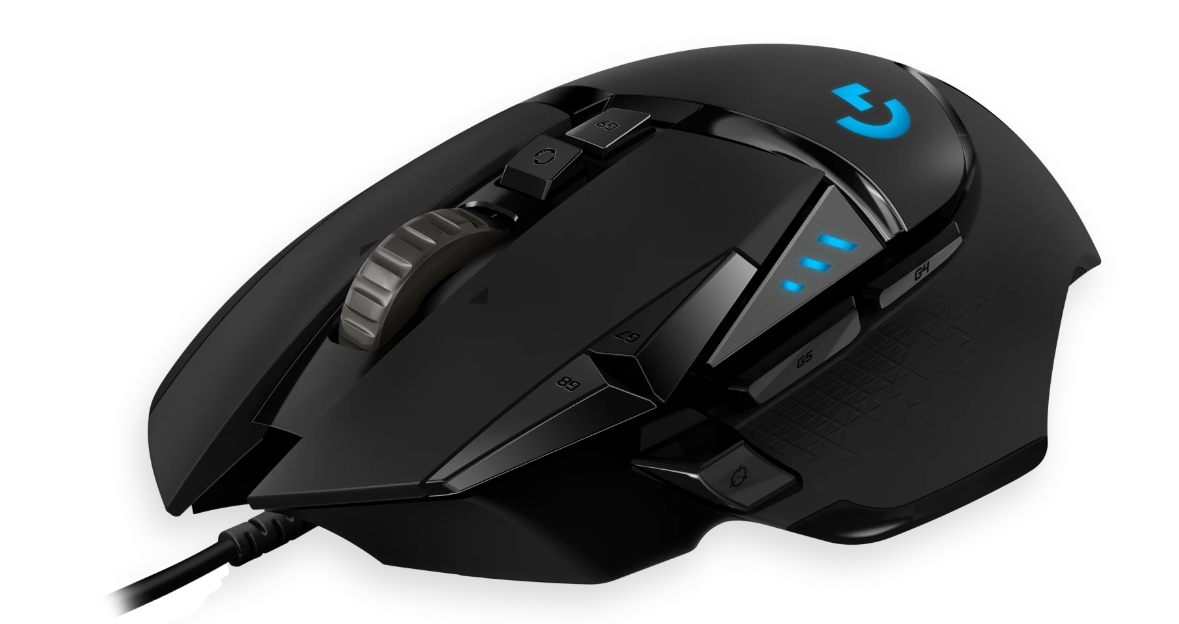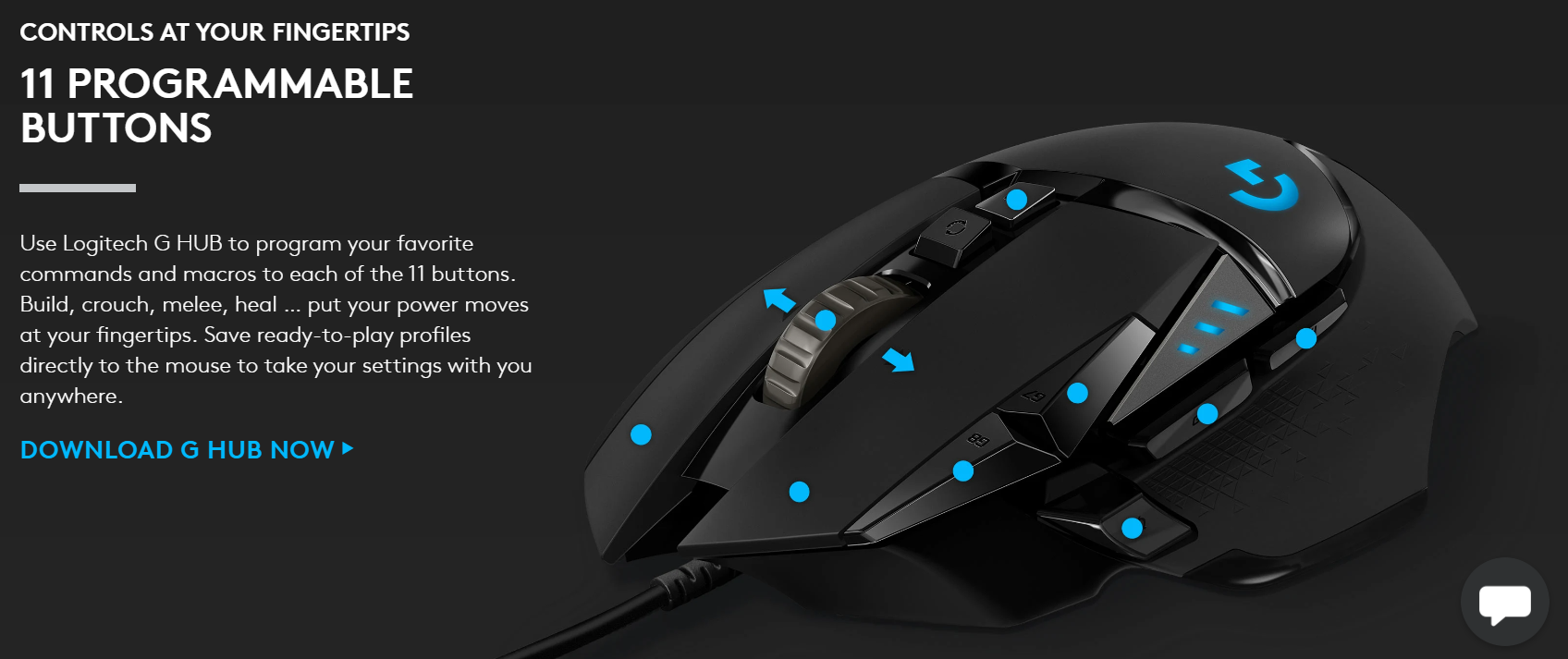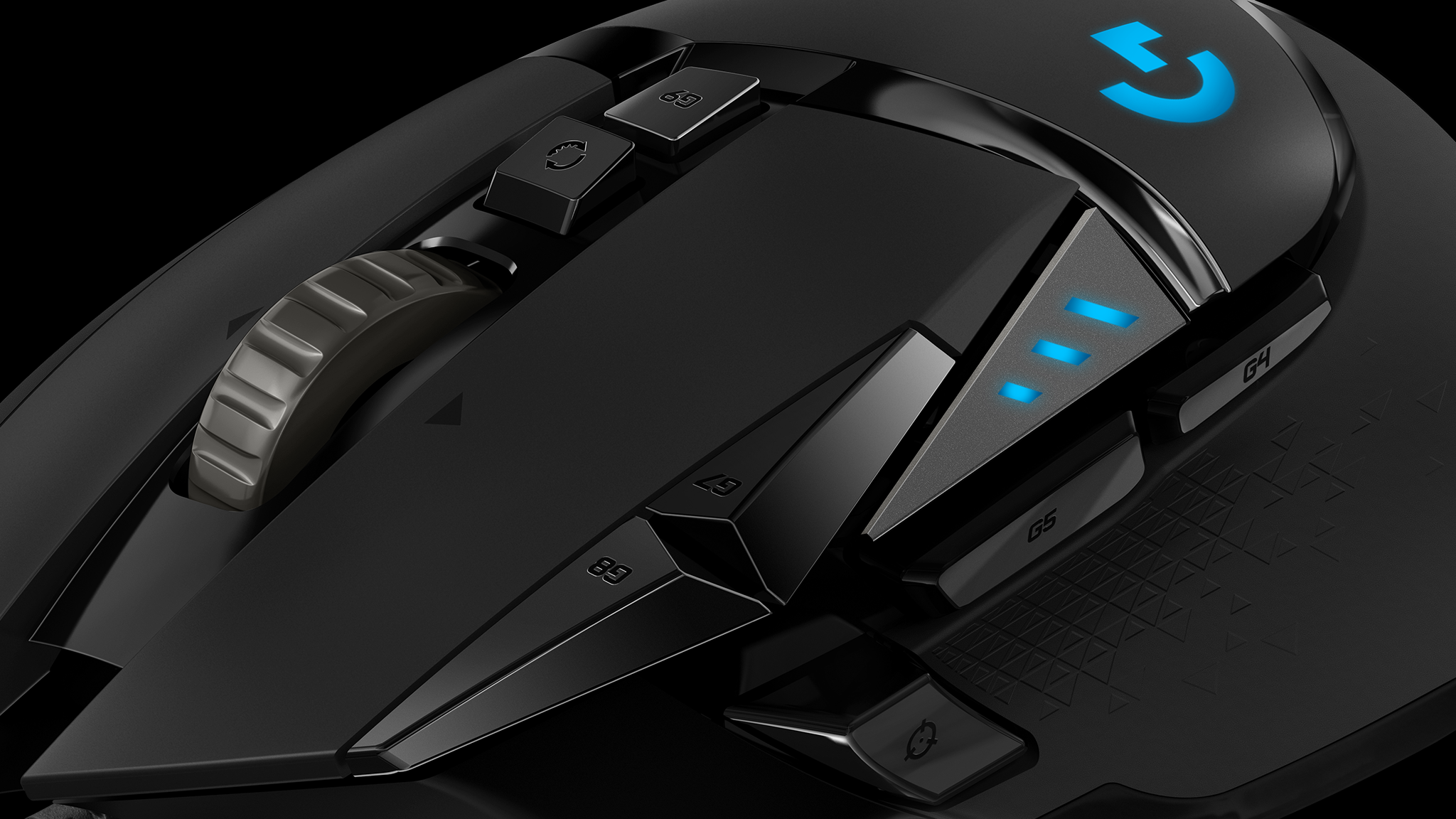Logitech G502 Gaming Mouse
At first sight, the Logitech G502 X gaming mouse doesn’t seem all that different from its predecessors. However, when you look closer, you’ll discover several helpful updates, especially for first-person shooter players. The G502 Hero 25k sensor remains unchanged, but the camera has received significant ergonomic, customizable, and weight-reduction upgrades.
Several adjustments have been made to enhance the heft. First, the Logitech G logo has no RGB or LED lighting. It’s a shame you couldn’t customize your mouse to show damage indicators, but I can see why they’d want to focus on the first-person shooter community. The scroll wheel is now made of plastic rather than metal to reduce weight, although it still has an unlimited scroll.
Logitech G502 Gaming Mouse Specifications
| Sensor | Hero 25,600dpi |
| Polling Rate | 1,000Hz |
| Size | 131.4 x 41.1 x 79.2mm |
| Buttons | 11 |
| Features | Interchangeable thumb button, infinite scroll wheel |
| Ergonomic | Right-handed |
| Weight | 89g (3.1oz) |
| Weight Distribution | Centred |
| Bluetooth | NO |
| Price | $80 | £80 |
PROS
- Advanced ergonomic design
- Robust and expertly crafted
- Power without the clutter
- Thumb buttons that can be switched out
CONS
- There have been no sensor upgrades.
- The clunkiness of the sound of Lightforce switches.
Price

The Logitech G502 Hero gaming mouse starts at $79 (£79, AU$129), a reasonable price for a mouse. Priced at $79 (£79, AU$119), it competes with the almost faultless SteelSeries Rival 600 and is more expensive than the comparably impressive Rival 310 (at $59) and Sensei 310 (at £59, AU$99). Those other mice are so fantastic that the Logitech G502 Hero’s only advantages are its design and many buttons.
Design

In terms of design, the new G502 won’t look very different from the old one. The mouse retains its traditional appearance: a gloomy, angular, and somewhat Batmobile-like creature. The gaming battle station aesthetic is very different from the conventional workplace aesthetic. The main buttons and grips are made from matte black plastic, while the glossy plastic is used to separate the mouse’s various design elements and for the mouse’s additional buttons. Matte plastic is better at disguising hand grease than shiny plastic.
The scroll wheel has a polished metal finish and distinctive notches. The notched scrolling may be activated by pressing a button next to the scroll wheel, and it has satisfying clicks. With unlimited scrolling enabled, a decent mouse flick can keep the wheel spinning for over 10 seconds. Avoiding reading lengthy documents like terms of service has never been simpler.
The G502 has a solid construction, yet its sharp edges give the impression that it may be used to draw blood. The two buttons to the left of the main click also hang curiously over the edge, giving the impression that they might break off at any moment. The positioning of the buttons is generally satisfactory. The three thumb buttons are all within easy reach and have distinct tactile differences that make them difficult to press accidentally. The two secondary mouse buttons on the left can be tricky for some users to learn. We usually have them set to DPI switches, with the most forward one being easily triggered by accident, resulting in a startling mouse acceleration.
Larger hand sizes may find the G502 Hero uncomfortable. It’s a little on the flimsy side, and the grips on the sides could be more secure. A claw grip does the job, although a more secure grasp may be achieved with deeper grooves and a softer rubber surface. The G502 Hero may be given some heft by inserting up to five 3.6g weights into a chamber on the bottom that pops open.
Performance

The Logitech G502 Hero has a 1,000Hz polling rate and 1ms response time, which is on par with what we’d expect from a high-quality gaming mouse. The Hero sensor, however, makes this mouse stand out. Our testing of the Hero sensor has revealed that it provides accurate tracking. It works with DPIs between 100 to 16,000. However, the highest limit is not all that significant. Consistency and responsiveness to our hand movements are the most critical factors.
The only thing that bothers us is when we accidentally press the button that raises DPI and ends at 5,000 instead of 2,500. The switches behind the buttons have a satisfying click and require very little force to activate. The buttons provide the proper resistance to prevent accidental presses when our fingers are resting on them without being overly soft. Logitech’s customizing software is necessary for a mouse with so many buttons.
The G502 Hero’s many controls necessitate careful consideration before use. Having so many buttons may be unnecessary in Overwatch unless you want instant access to all your speech lines. However, having all your gadgets and movement options within easy reach is crucial in Rainbow Six Siege. To perform more complex manoeuvres that might otherwise be more challenging, lean left and right by flicking the middle scroll wheel.
The Conclusion
Thanks to its many buttons and weight adjustments, we strongly recommend this mouse because of its excellent performance and remarkable adaptability. However, we can’t deny SteelSeries’s enormous shadow over it. SteelSeries’ latest gaming mouse features a TrueMove 3 sensor, which we find to be faultless despite the Hero sensor’s more incredible maximum DPI and tracking speed. In addition, the TrueMove 3+’s secondary sensor enables superior liftoff detection, allowing for even more precise mouse control.
The Rival 310, the Sensei 310, and the Rival 600 all have premium comfort and construction. While the G502 Hero’s comfortable design and many buttons may appeal to some, SteelSeries’ best-wired gaming mice are relatively inexpensive and provide virtually the same performance while accommodating a more comprehensive range of grip styles.

















